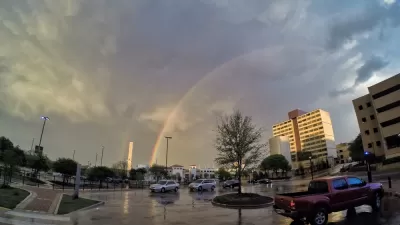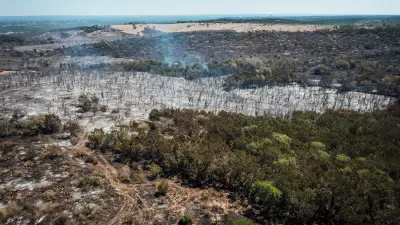An op-ed by David Heymann produces an elaborate, protracted metaphor of Austin as a former youthful "golden child" now showing the least attractive possible traits of middle age.
(Updated 04/06/15) "Since the biological paradigm that explains cities as entities remains in vogue, here is my biological analogy for the city of Austin. Get ready for hyperbolic overstatement," writes David Heymann at the beginning of the op-ed in warning about the withering critique that follows.
The next paragraph reads as follows:
"Once blessed with a golden youth, and since then — having had that youthful image reinforced often enough by its many admirers — spared the crisis of having to figure out how that charm might continue once the blush wore off, Austin has grown into a somewhat lazy and troubling adult, with unpromising habits (Yeah, I'm thinking I really want to be an Event City...)."
Much of Heymann's critique centers on issues of planning and development. For instance the following paragraph, full of references that will be familiar to anyone well versed in the history of the city's land use regulations:
"Though little aging in the sense of decline has taken place, a pudgy truth is evident. There is a noticeable widening (Wait, I'm the 11th largest WHAT in America?); an uneven densening of the middle (Some of that is new core muscle, dude!); sudden unwanted hair in problematic locations (Not my fault! Those oddly sprouting towers are a side effect of my capitol view corridor inoculation!); a marked hardening of the arteries slowing the circulatory metabolism (Not fair; that's genetic! And I'm getting a stent in my MoPac.); and the beginnings of a patchy, beige blemishing (Okay, I got that from going to a lot of cheap hotels.)."
Eventually Heymann ceases with the metaphor and voices concern that Austin is becoming a place of more cynicism than hope and bereft the inherent optimism of its neighbors, Dallas and Houston.
Article link has been updated to provide access without a paywall.
FULL STORY: Austin, my middle-aged city

Maui's Vacation Rental Debate Turns Ugly
Verbal attacks, misinformation campaigns and fistfights plague a high-stakes debate to convert thousands of vacation rentals into long-term housing.

Planetizen Federal Action Tracker
A weekly monitor of how Trump’s orders and actions are impacting planners and planning in America.

In Urban Planning, AI Prompting Could be the New Design Thinking
Creativity has long been key to great urban design. What if we see AI as our new creative partner?

Massachusetts Budget Helps Close MBTA Budget Gap
The budget signed by Gov. Maura Healey includes $470 million in MBTA funding for the next fiscal year.

Milwaukee Launches Vision Zero Plan
Seven years after the city signed its Complete Streets Policy, the city is doubling down on its efforts to eliminate traffic deaths.

Portland Raises Parking Fees to Pay for Street Maintenance
The city is struggling to bridge a massive budget gap at the Bureau of Transportation, which largely depleted its reserves during the Civd-19 pandemic.
Urban Design for Planners 1: Software Tools
This six-course series explores essential urban design concepts using open source software and equips planners with the tools they need to participate fully in the urban design process.
Planning for Universal Design
Learn the tools for implementing Universal Design in planning regulations.
Gallatin County Department of Planning & Community Development
Heyer Gruel & Associates PA
JM Goldson LLC
City of Camden Redevelopment Agency
City of Astoria
Transportation Research & Education Center (TREC) at Portland State University
Jefferson Parish Government
Camden Redevelopment Agency
City of Claremont





























